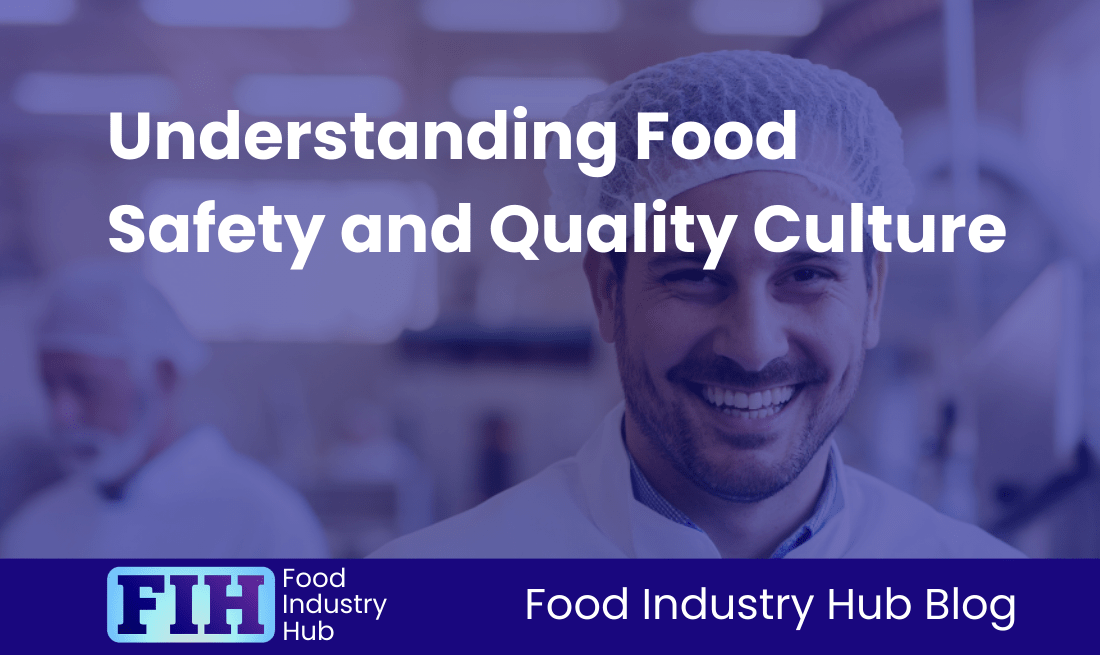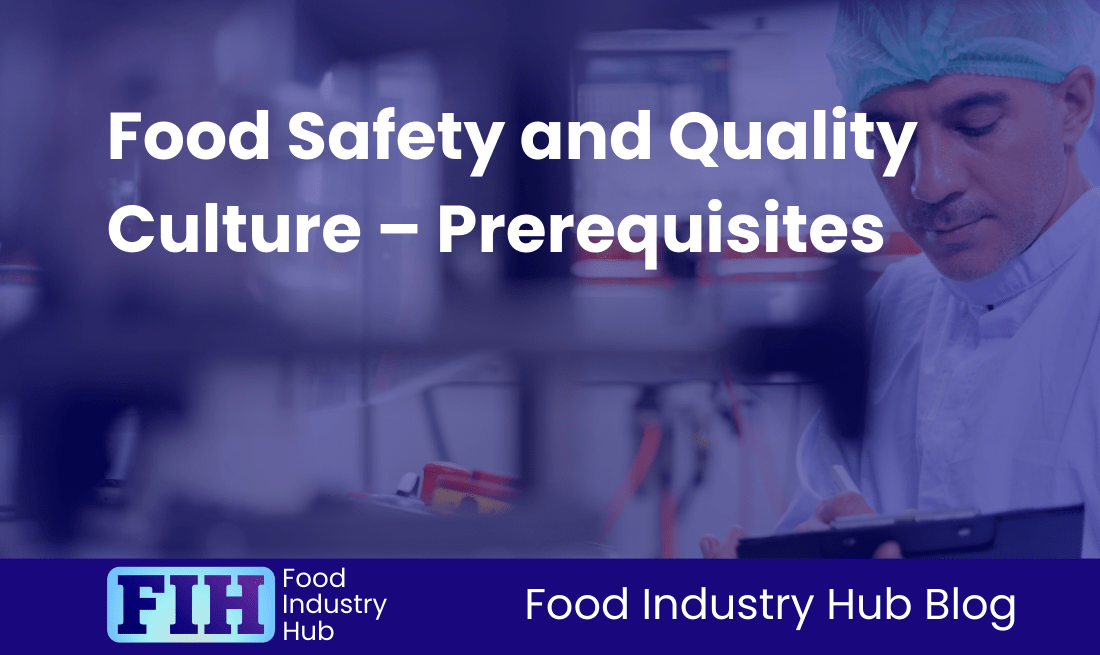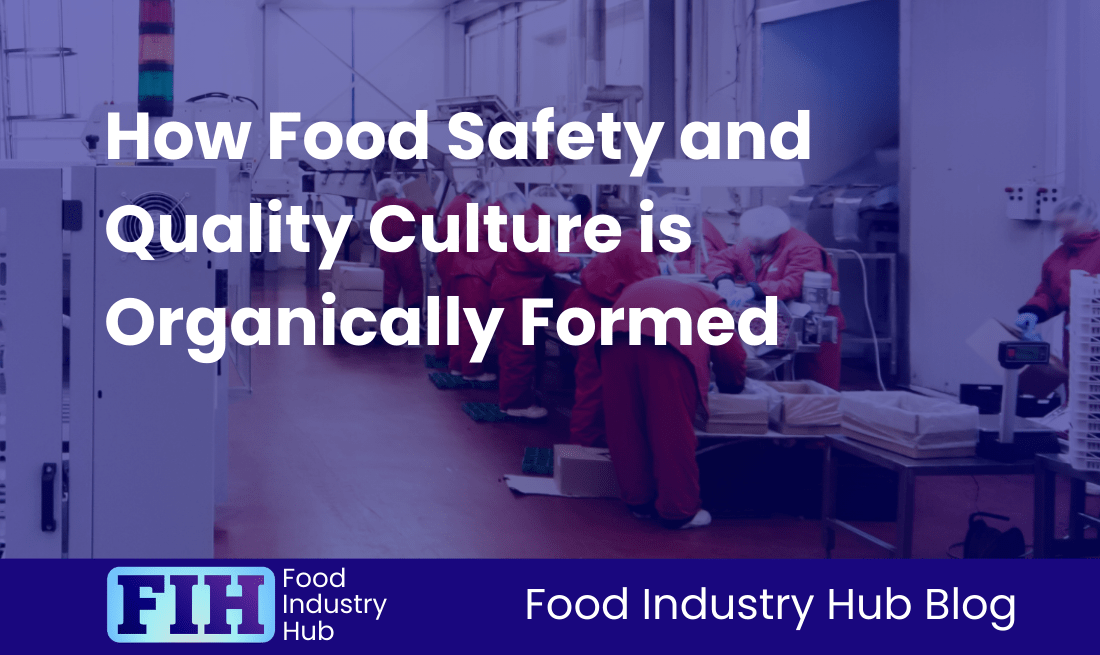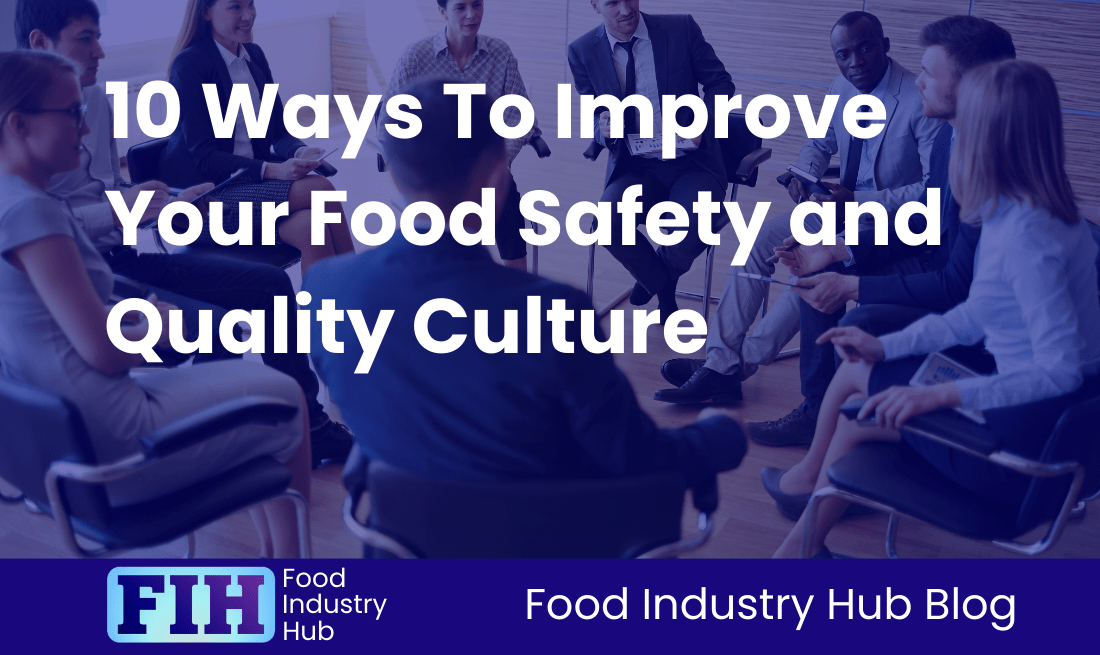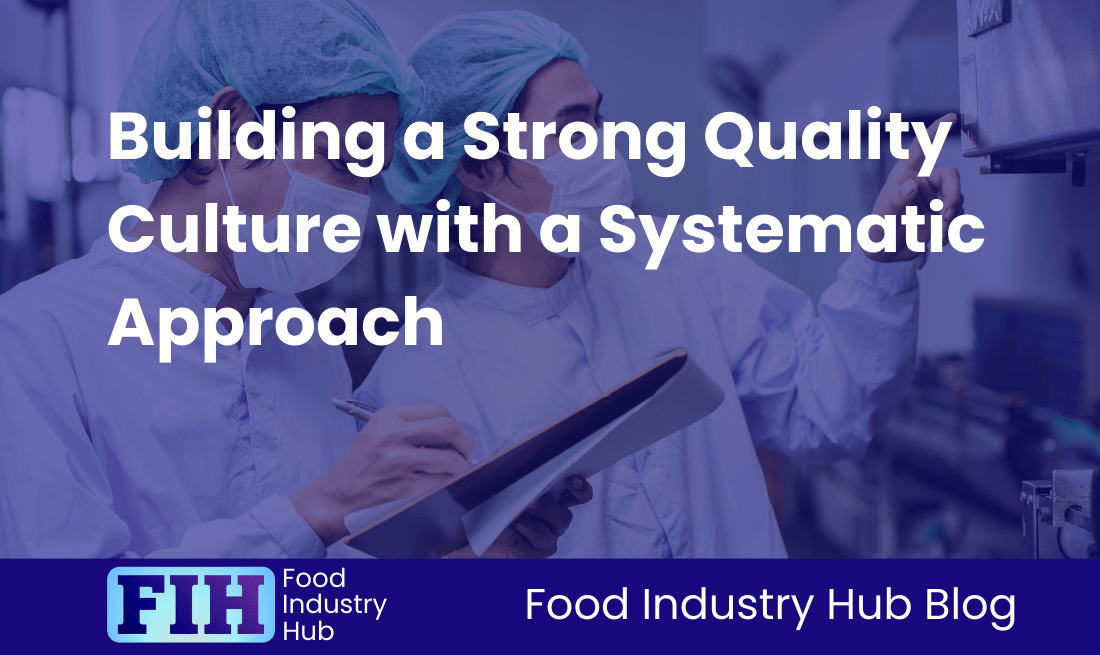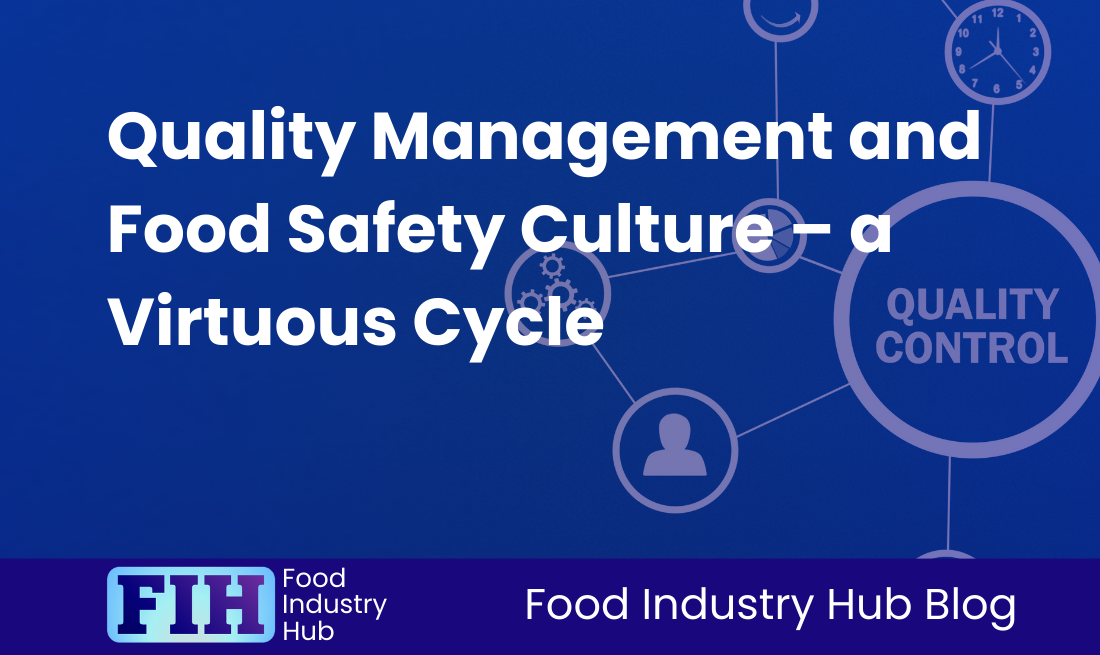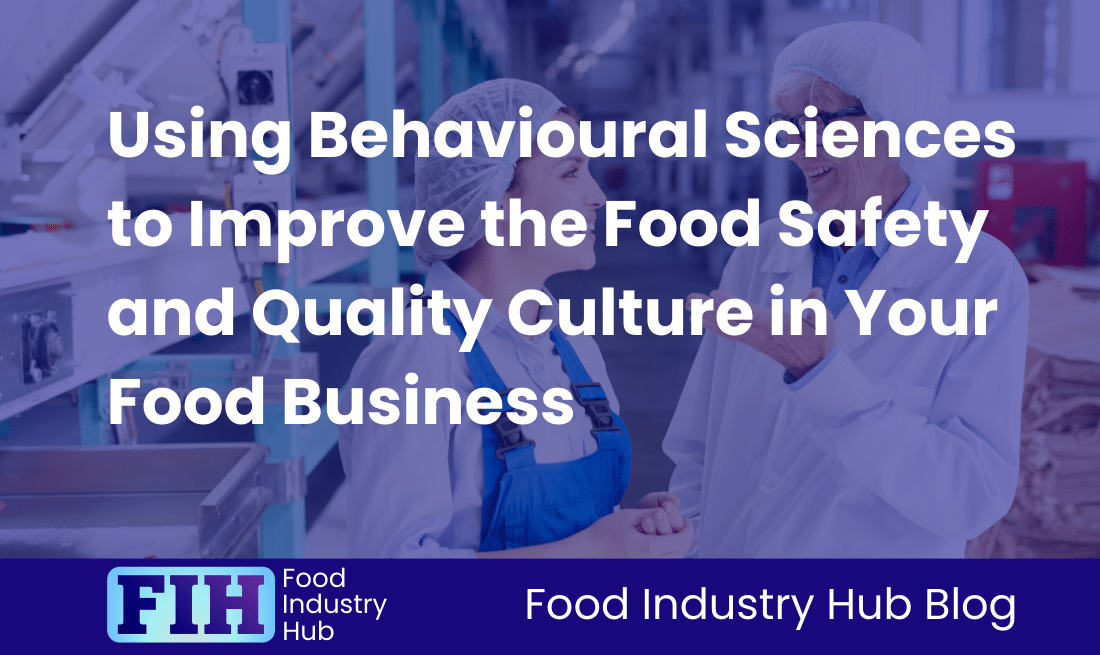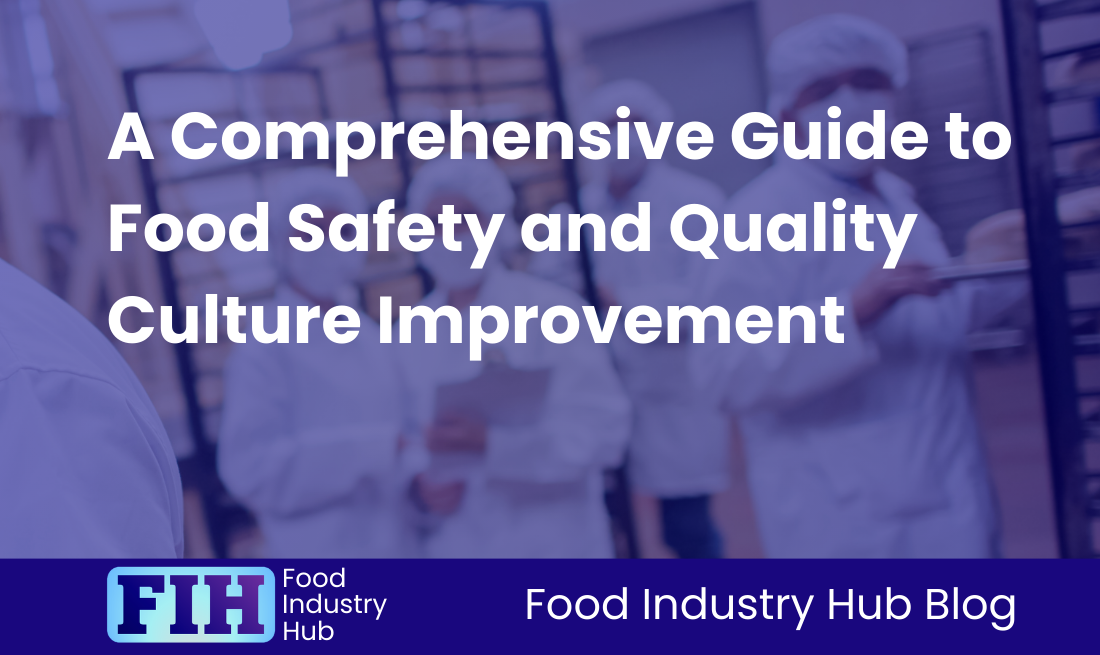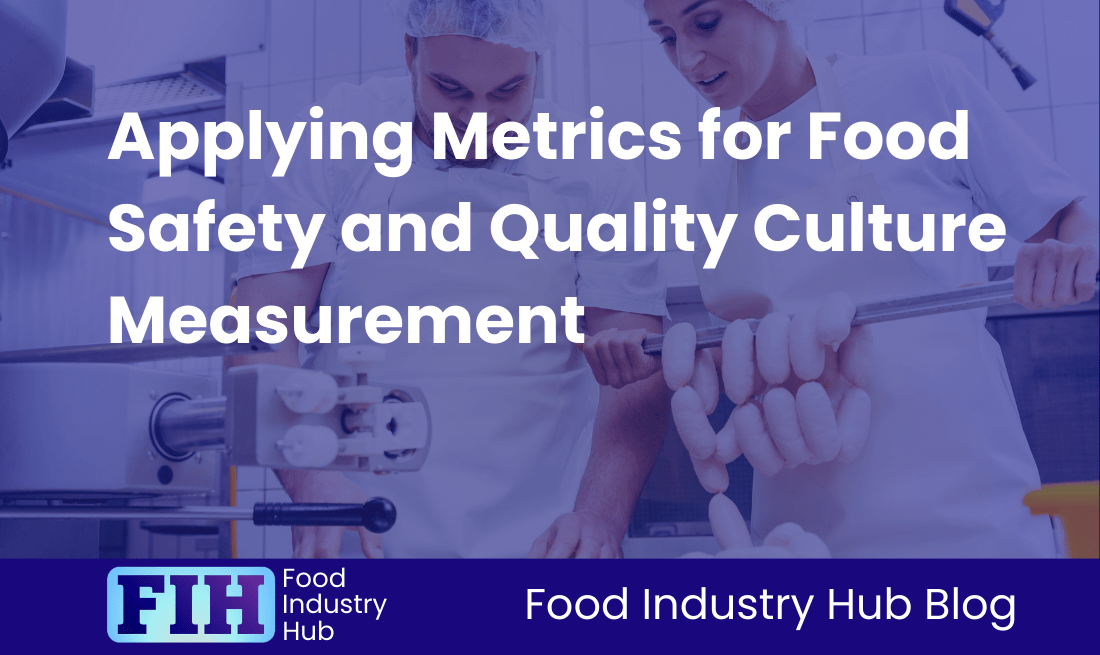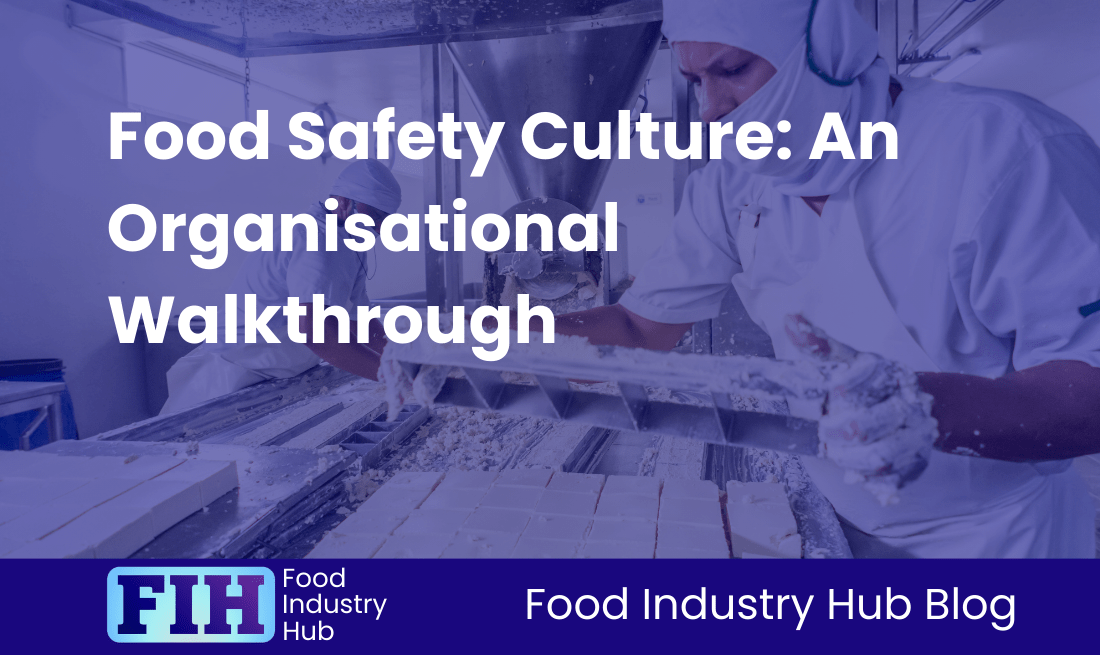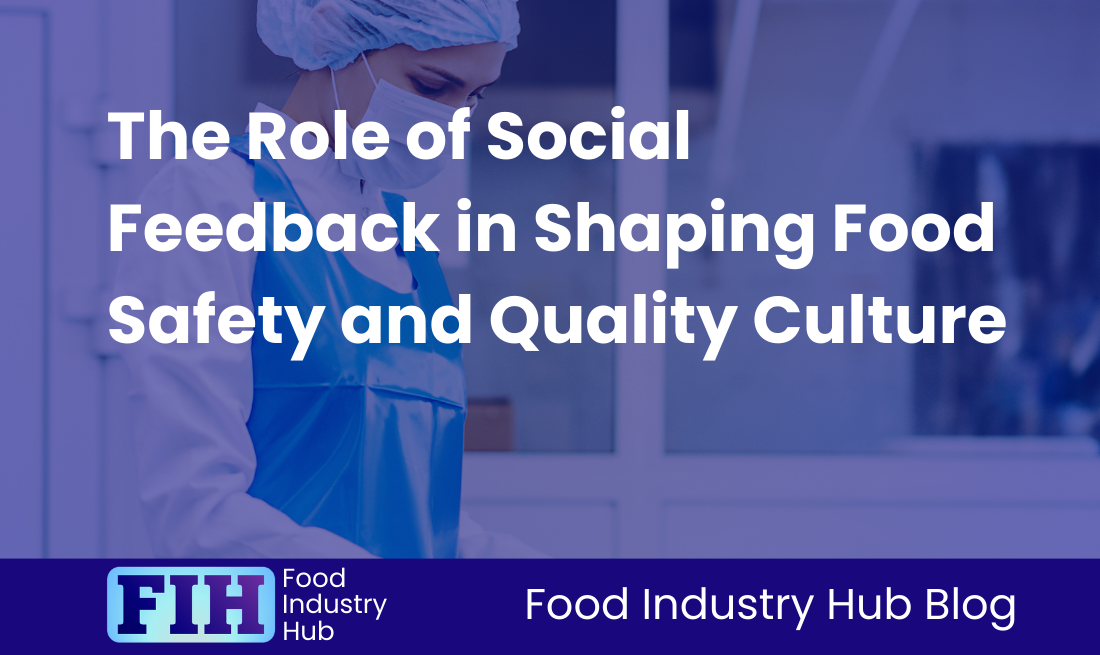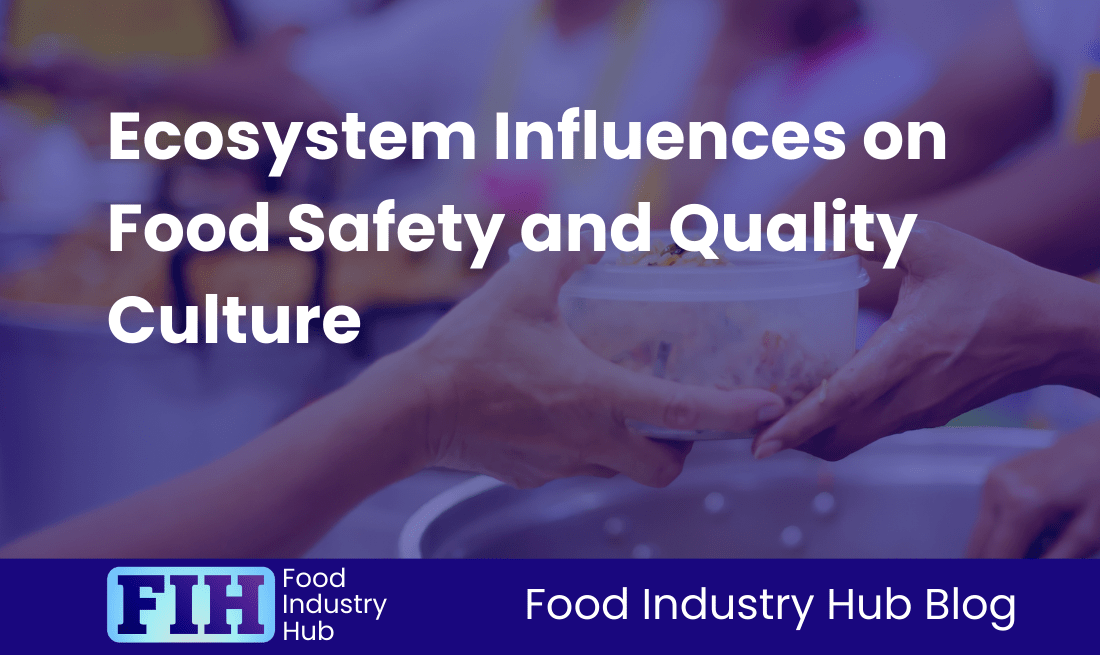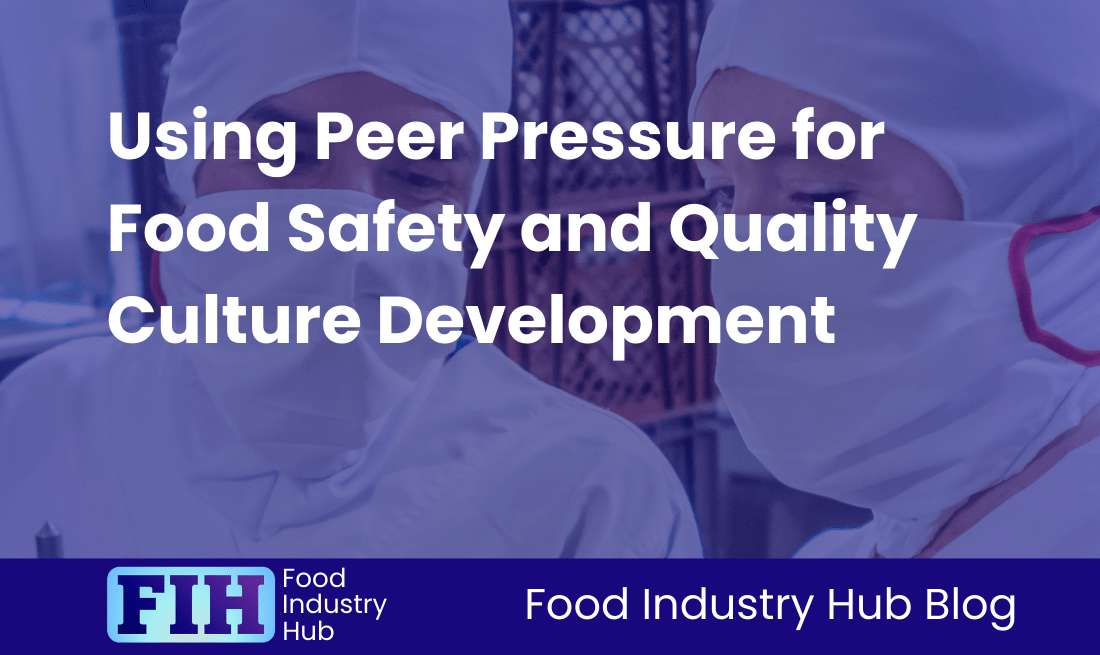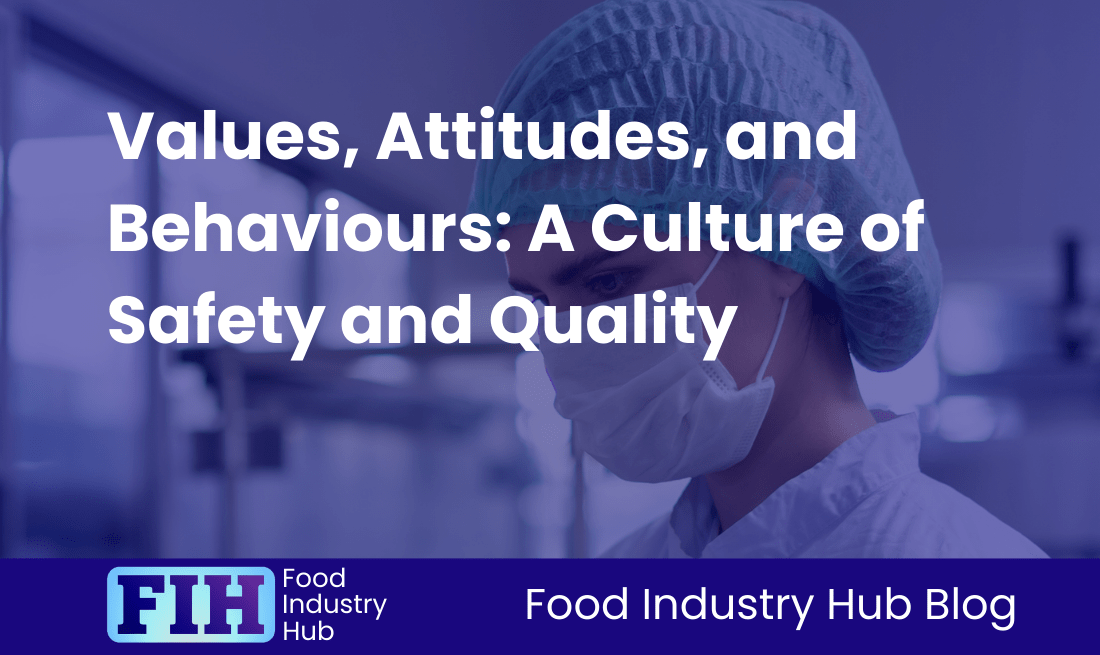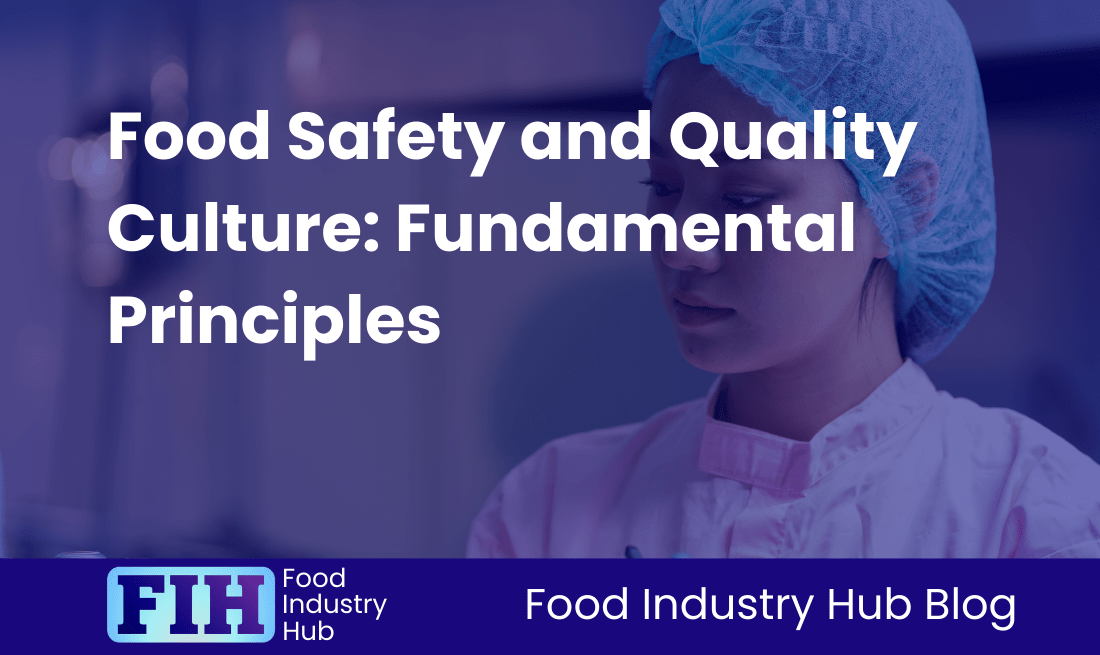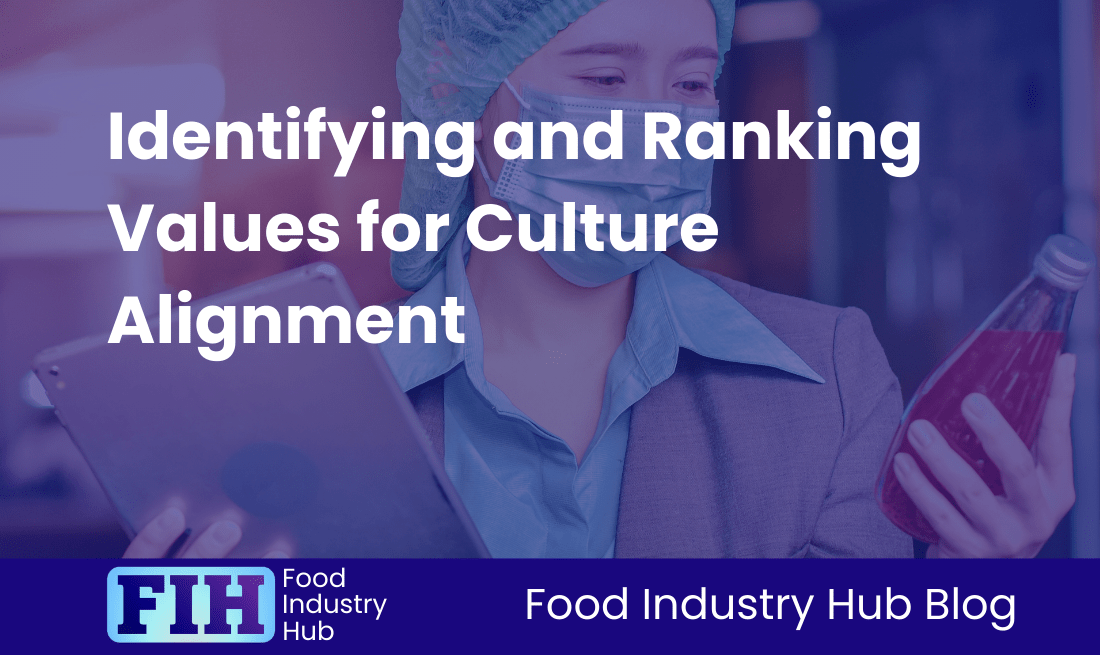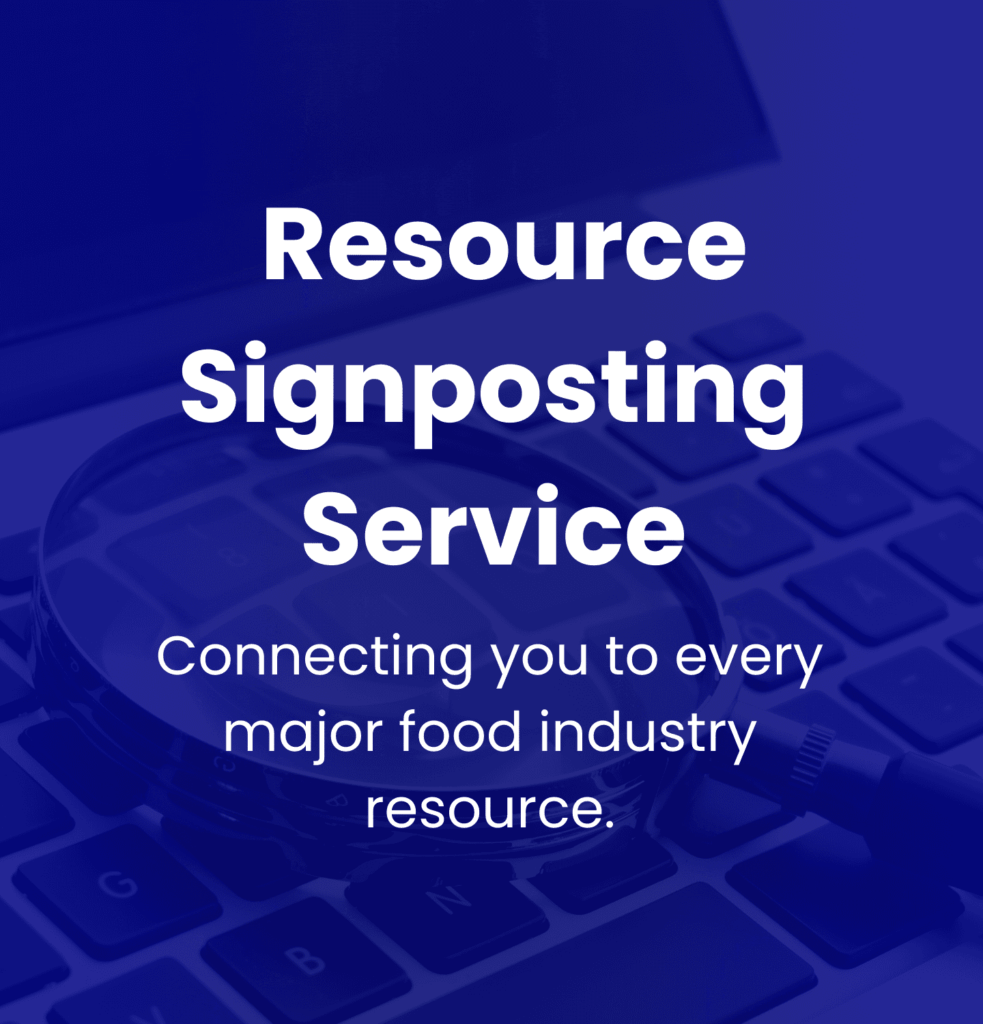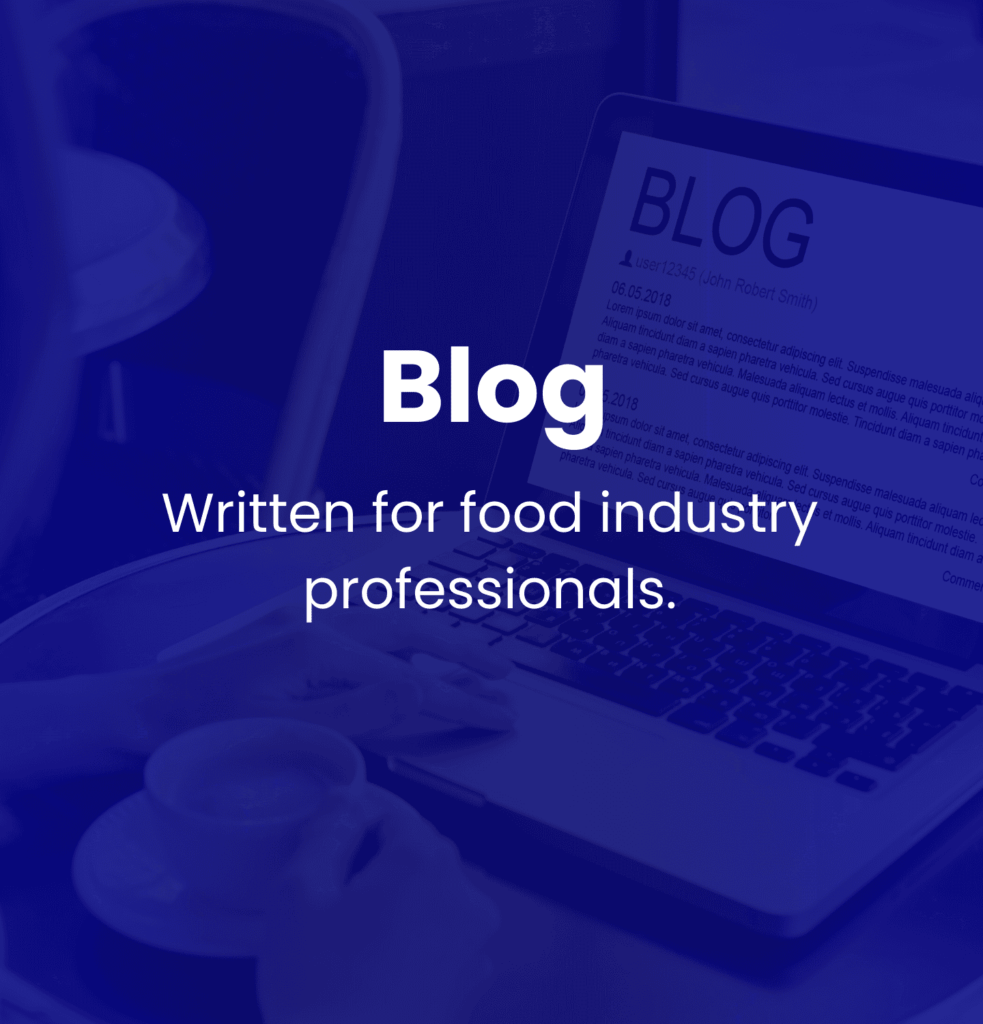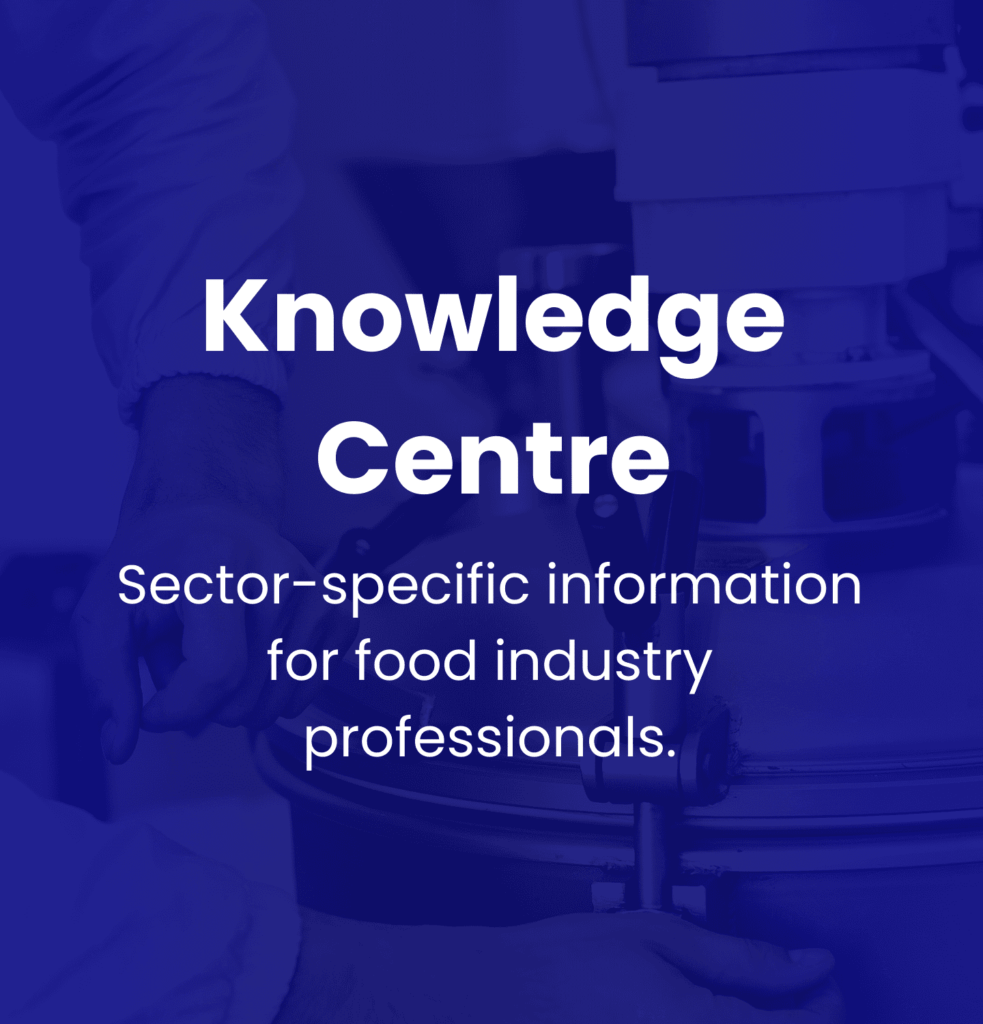Know: Food Safety and Quality Culture Development
Introduction
Maintaining food safety standards is integral for safeguarding public health and bolstering a company’s reputation. The potential threats linked to unsafe food practices present substantial health risks to consumers and create reputational challenges for organisations that fail to meet these standards. An enlightened approach to food safety and quality ensures that best practices pervade a company’s operations, strengthening both compliance and commitment to excellence.
The Food Safety and Quality Culture encapsulates the shared attitudes, principles, and norms that dictate food safety practices within an organisation. It consists of the mutual values that influence how food is produced, processed, and distributed. Instead of perceiving safety merely as a mandatory requirement, this culture ingrains it into the organisational fabric, instituting an environment where food safety becomes a foundational value.
Development of a sturdy Food Safety and Quality Culture is crucial for several reasons. First, it assists organisations in fulfilling regulatory obligations, thus reducing the risk of penalties linked to non-compliance. Second, companies that genuinely prioritise food safety foster trust and enhance their reputation, elements indispensable to enduring business success. Strong safety cultures prove instrumental in risk mitigation and cost savings; averting incidents not only prevents costly recalls but also simplifies operations.
The importance of a Food Safety and Quality Culture Development Plan extends beyond the immediate scope of food safety and dovetails into the broader spectrum of company culture. It aligns organisational goals by ensuring that safety coheres with the company’s overarching mission. Such alignment encourages consistency, consequently improving reliability and diminishing the chances of errors in food safety practices. Also, it impels agility in addressing emerging hazards, lifting overall safety outcomes.
In our exploration of major themes within the framework of food safety culture, we will put emphasis on essential components such as Leadership Commitment, Employee Engagement, Regulatory Compliance, and the Integration of Technology. These elements pave the way for a holistic approach to food safety that not only safeguards consumers but also strategically steers companies towards sustained success in the industry.
Key Takeaways
Effective leadership is vital in shaping a strong culture of food safety within organisations. Not only do leading figures set the course and tone for food safety practices but they also mirror behaviors that highlight its significance. This commitment is displayed through actions, resources distribution, and recurring messaging that stresses the organisation’s devotion to safety. Transformational leadership styles have a remarkable effect in getting employees on board, encouraging forward-thinking behaviours that improve food safety. By promoting clear lines of communication and providing unambiguous expectations, leaders can ascertain that each employee comprehends their role in maintaining safety standards.
Alignment of Food Safety Initiatives with Broad Business Goals
For organisations, aligning food safety initiatives with wider business objectives is of great importance. This alignment amplifies operational efficiency and folds safety into the company’s core principles, ensuring it is not viewed as a detached compliance concern. By ingraining food safety within the company’s vision and mission, organisations can develop a harmonised strategy that propels safety and business performance alike. Setting up performance metrics tied to safety objectives allows for efficient tracking and endorses a mutual commitment amongst all employees.
Employee Engagement in Food Safety Culture
Active involvement and a sense of responsibility over safety practices among employees stimulate a proactive culture where safety gets prioritised. Delivering ongoing training and encouragement for open feedback enables employees to spot and tackle potential hazards. A working environment that encourages communication without fear of repercussions is necessary to ensure that safety remains a shared duty. This engagement inevitably results in better compliance and productivity, boosting the efficiency of the organisation’s food safety measures.
Food Industry Hub Management Systems can significantly boost the effectiveness of your food safety and quality management system, leading to improved confidence and elevated quality assurance throughout your operations.
Leadership Commitment and Strategic Governance
The Essential Role of Senior Management
In food manufacturing, the roles and responsibilities of senior management are decidedly multifaceted. One of their most significant roles is the establishment and cultivation of a strong food safety culture. How leaders approach food safety frequently dictates the organisational view on safety practices, regulatory compliance, and overall quality control. By setting clear food safety expectations and priorities, leaders can instil these values at all levels of the company. There is a wealth of research indicating that when leaders demonstrate a clear commitment to safety, it has a positive effect on employees’ attitudes and behaviours towards food safety, making it an indispensable factor in maintaining a culture of accountability and excellence.
Regular participation in safety audits and recurring training initiatives are key activities for senior leadership roles. Not only do these activities underline their commitment, but they also reinforce the importance of consistently adhering to food safety procedures. By incorporating these processes into everyday operations, senior management can create an environment that not only prioritises safety but also ensures continual engagement with food safety and quality standards.
Aligning Food Safety with Business Goals
To fully integrate a food safety culture into their operations, organisations must ensure it aligns with their overarching business objectives. Acknowledging food safety as more than a regulatory requirement, but as an inherent part of the company’s business strategy is essential. A robust integration methodology might involve integrating clear safety objectives into business plans, highlighting the direct link between safety practices and overall performance. By positioning safety initiatives as integral to achieving profitability and maintaining a competitive edge, organisations can breed a culture of trust among consumers.
The Importance of Resource Allocation and Accountability
Pledging resources to support food safety initiatives is a significant commitment from an organisation’s senior management. The provision of adequate funding for training programmes, safety technology and infrastructure is an important aspect of upholding stringent food safety standards. This investment underscores management’s commitment to providing a safe working environment and encourages employees to respect and engage with safety practices.
Emphasising accountability is another essential aspect. Leaders should actively promote continuous improvement, whether through proactive involvement in safety audits or management reviews. This not only promotes transparency but also reinforces a culture that prioritises food safety and urges every team member to strive for excellence in their roles.
Key Terminology: Food Safety Culture & Regulatory Standards
Examining Food Safety Culture
Within food manufacturing organisations, food safety culture can be defined by shared values and beliefs that place safety as a collective responsibility. This means that every employee, regardless of their role or position, contributes to maintaining safe food production practices. Consistent communication, interaction and training underpin these shared values, ensuring that all employees are aware of their role in upholding food safety. A strong food safety culture not only helps ward off contamination issues, but it also nurtures consumer trust, thereby protecting the organisation’s reputation and profitability.
Understanding Assurance Standards
Assurance standards, such as BRCGS (Brand Reputation through Complaince Global Standards), SQF (Safe Quality Food), and FSSC 22000 (Food Safety System Certification), are fundamental in shaping effective food safety cultures within organisations. These frameworks offer comprehensive methodologies to manage food safety risks and improve quality control. Adherence to these standards not only ensures compliance with industry norms but also paves the way for continuous improvement in safety practices and boosts consumer confidence in food products. By integrating these standards into their operational procedures, food manufacturers can bolster their credibility, ensuring that safety is woven into every facet of their production processes.
Employee Engagement and Behavioural Safety
Training and Development: The Impact on Safety
Continuous employee training holds significant value in the food manufacturing sector, as it enhances compliance with safety regulations and empowers employees to identify and respond to potential hazards. Evidence suggests organisations placing a high importance on ongoing training can achieve substantial reductions in workplace incidents and improve operational efficiency. In these organisations, employees are better equipped to handle emergencies and follow safety protocols. Behavioural-based safety training, a method of involving employees in understanding safety protocols, leads to increased motivation and shared responsibility for safety outcomes. Organisations committed to ongoing development create a proactive safety environment where workers have the resources to champion and uphold high safety standards.
Importance of Feedback Mechanisms
Feedback mechanisms are integral in the cultivation of a robust food safety culture. They equip employees with the means to voice concerns and suggest improvements. Regular feedback sessions and tools, such as surveys or digital platforms, help organisations track workplace safety sentiment and appropriately tailor their training approaches. These mechanisms promote open communication, instilling a sense of collective responsibility for safety outcomes among employees. This ensures that safety compliance evolves into an ongoing commitment rather than an isolated endeavour.
Celebrating Safety Success
Acknowledging and celebrating safety achievements boosts employee engagement. When organisations appreciate the diligent efforts and contributions of their employees towards safety compliance, it elevates morale and emphasises the importance of adhering to these standards. Celebration initiatives could include awards for adherence to safety protocols or recognition events highlighting team or individual successes in preserving safety standards. Such practices help to motivate employees to continue prioritising safety and foster a culture where safety becomes a valued aspect of daily operations.
Key Terminology: Gamified Training & Reporting Mechanisms
Gamified Training
Gamified training involves the use of game design principles to augment engagement and retention during safety training programmes. It transforms potentially monotonous compliance training into an interactive experience, promoting active participation and rendering learning about safety practices enjoyable. Within the food manufacturing industry, gamified training proves particularly effective in instilling knowledge about important control points and emergency responses, while keeping employees actively invested in the learning process.
Anonymous Reporting Mechanisms
Anonymous reporting mechanisms offer employees a secure means of reporting safety concerns without fear of reprisals. These systems are essential in shaping a safety culture where open communication is encouraged, preventing potential issues from escalating into serious incidents. By introducing anonymous reporting channels, food manufacturers can nurture a more attentive workplace environment. This allows for swift management responses to safety concerns and enables employees to feel secure and valued when discussing potential risks.
By integrating continuous training, effective feedback mechanisms, and a recognition of safety achievements, along with gamified training and anonymous reporting systems, organisations can nurture an engaged workforce dedicated to upholding food safety and quality standards.
Sign-up for the Food Industry Hub Mail Service
We regularly produce new content for food industry professionals, and the Food Industry Hub Mail Service is the best way to stay up to date with the latest additions.
Signup today to be added to the Food Industry Hub mailing list.
Regulatory Compliance and Audit Preparedness
Navigating Regulations
In the food industry, abiding by regulatory compliance carries enormous weight, as it directly impacts food safety, its quality, and overall public health. It is incumbent on organisations to traverse a multifaceted array of regulations varying significantly, determined by geography and product type. For instance, in the United States, the Food Safety Modernisation Act (FSMA) advocates a forward-thinking approach to food safety for food manufacturers. This proactive stance places a premium on preventive control measures, as opposed to reactive ones, to curtail risks linked to foodborne illnesses. International yardsticks such as ISO 22000 and BRCGS lay down comprehensive frameworks for food management systems, necessitating enterprises to maintain constant training, meticulously maintain records, and ensure adherence to local policies.
Grasping these divergent regulatory and assurance scheme influencers is indispensable for averting substantial penalties, including monetary fines and even shut-downs owing to non-compliance [Source: FSA]. Food manufacturers are thus energised to preserve thorough records, and execute regular internal audits to ascertain compliance to all safety mandates.
Cultural Maturity Audits
Regular cultural maturity audits are instrumental in inculcating a safety-centric ethos within food manufacturing organisations. This concept underlines the collective attitudes, ethos, and principles that mould safety practices within the workforce. By routinely carrying out assessments, companies can spotlight lacunae in their food safety practices and chalk out strategies to bolster their organisational culture orbiting safety [Source: Napier University].
Through regular implementation of cultural maturity audits, organisations can intensify workforce engagement, assess managerial commitment, and improve discourse regarding food safety matters. Such evaluations bolster the cultivation of an environment where safety is prioritised, enhancing abidance to guidelines and ultimately bringing down the risk of foodborne diseases.
Importance of Proactive Audit Strategies
Proactive audit strategies are key for guaranteeing that food manufacturing organisations consistently clear safety standards. Periodic internal audits harmonised with continuous improvement practices empower companies to identify and rectify potential issues before they swell into sizable challenges. This long-sighted approach not only readies businesses for surprise inspections, but also cultivates an ethos of constant amelioration and compliance.
Companies employing proactive audit strategies stand to significantly boost their capabilities for early detection and remedy of compliance gaps. This results in lowering the risk of non-compliance, bolstering the firm’s reputation in the eyes of regulators and customers alike. A demonstrated pledge towards food safety not only safeguards public health but also uplifts operational efficacy.
Key Terminology: Cultural Maturity & Food Safety Modernisation Act (FSMA)
Explanation of Cultural Maturity
Cultural maturity within food safety mirrors how deeply ingrained food safety values are within an organisation. A mature food safety culture underlines transparent communication, involves employees, and propounds shared comprehending of safety standards across all strata of the workforce.
Explanation of FSMA
The Food Safety Modernisation Act (FSMA) signals a marked shift in food safety regulation in the US. This focus is on preventive measures than merely reacting to contamination incidents. The act mandates food manufacturers to formulate exhaustive food safety plans entailing risk analysis, preventive measures, and rigid supervision of operations.
How They Enhance Industry Standards
Both cultural maturity and FSMA are key drivers for refining food safety standards within the industry. While cultural maturity motivates organisations to foster environments where safety practices are embedded in daily operations, FSMA underscores this ethos by mandating preventive measures and demanding accountability. Together, they advocate a culture of excellence that results in better compliance, lessened food safety hazards, and ultimately safer products for consumers.
Continuous Improvement and Data-Driven Insights
Role of Technology
In the context of the food manufacturing industry, the value of technology in driving continuous improvement and ensuring safety cannot be overstated. Modern tools such as advanced data analytics, artificial intelligence (AI), and machine learning (ML) equip organisations to gather and process vast amounts of data. These tools aid in informed decision making and the identification of areas for improvement. Quick access to real-time data enables swift corrective actions on food safety processes, reducing human error and enhancing capability for compliance reporting.
The integration of Internet of Things (IoT) devices enhances safety by allowing ongoing monitoring of control points and environmental conditions throughout the stages of production and distribution. Real-time monitoring aids in the adherence to safety protocols and enables organisations to respond promptly to any deviations that may endanger food quality and consumer safety [Source: FSNS].
Advantages of Longitudinal Assessments
Regular evaluations, or longitudinal assessments, are a cornerstone in the ongoing advancement of a food safety culture. These assessments allow organisations to track their progress in food safety practices over time, identifying trends, successes, and areas that need attention. Such evaluations assist in maintaining compliance with evolving regulations and provide insights into workforce attitudes and behaviours towards food safety, which play a key role in developing a resilient safety culture within the organisation.
Longitudinal assessments enhance adaptability by allowing food manufacturers to fine-tune their strategies based on feedback and outcomes. This iterative process ensures that organisations can proactively improve their food safety standards to align with global market demands and compliance requirements, inspiring a culture of progressive improvement.
Adoption of Global Best Practices
Incorporating global best practices in food safety involves the adoption and implementation of well-established standards set by organisations such as BRCGS, SQF, and FSSC 22000. These standards highlight the significance of nurturing a proactive food safety culture [Source: FSSC]. Successful implementation usually involves comprehensive training programs, promoting open communication about food safety practices, and facilitating continuous monitoring of compliance with safety protocols.
Leveraging these esteemed frameworks, local food manufacturers can align their safety protocols with international best practices while adjusting them to meet local regulatory needs. This process ensures compliance with food safety regulations, enhances an organisation’s reputation locally and globally, and underscores the leading role of leadership and employee engagement in forming a successful food safety culture.
Key Terminology: Internet of Things (IoT) & Predictive Analytics
Explanation of IoT and Predictive Analytics
IoT (Internet of Things): This term refers to a network of interconnected devices and sensors that gather and exchange data. In the realm of food safety, IoT devices can monitor environmental conditions like temperature and humidity in real-time, thereby curtailing contamination risks. For example, IoT applications can detect unusual occurrences in storage or processing conditions, enabling the initiation of immediate corrective measures.
Predictive Analytics: This concept involves using data analysis techniques and algorithms to predict potential safety risks based on historical data. Within the food manufacturing sector, predictive analytics helps identify contamination patterns, evaluate risk levels, and optimise supply chain processes. Such analysis enables organisations to implement preventative measures before the onset of any issues.
The collective utilisation of both IoT and predictive analytics promotes a more proactive approach to food safety, granting organisations the capacity to perform timely interventions and maintain high safety standards throughout their operations. The integration of these technologies into daily practices inspires a culture of continuous improvement and data-driven decision making, a necessity for ensuring high food safety standards.
Developing an Implementation Strategy for Food Safety Culture
Guidelines for Effective Action Plans
An implementation strategy for developing a food safety culture in the food manufacturing sector necessitates a detailed, well-structured plan. This strategy should lay out specific activities, timelines, and success metrics. The first step is for organisations to embrace a strategic planning process. This process should not only establish transparent objectives but also integrate these goals into routine operations. Comprehensive knowledge of food safety regulations is essential as it directly impacts organisational goals and risk mitigation strategies.
Success is built on setting transparent and quantifiable goals that harmonise with regulatory requirements and organisational ambition. One way of ensuring clarity is to apply the SMART (Specific, Measurable, Achievable, Relevant, Time-bound) criteria to these objectives. It is recommended that organisations document their food safety protocols in a manner that is easy for all employees to understand and conform to. This includes practices related to cleanliness, sanitation, and allergen control. Regular audits and inspections are significant ensuring continued compliance and identifying potential system weaknesses. A robust auditing routine strengthens adherence to established protocols, promoting accountability among employees, as reflected by the [Source: Food Safety Magazine].
It is important to establish objective success metrics. Examples might comprise tracking of compliance rates, the frequency of food safety incidents, and the efficiency of training programmes. Regularly re-evaluating these metrics provides the opportunity for necessary adjustments to be made to the strategic plan in line with evolving standards and practices [Source: Halal Foundation].
Employee Involvement: Strategies for Getting Staff Involved
Active employee participation is a key component of a robust food safety culture. Strategies to enhance workforce involvement could include improved communication channels that facilitate feedback and reporting of safety concerns. Launching forums where staff can voice their ideas or raise issues can promote an open culture. The implementation of an anonymous reporting system could heighten this ability to communicate, as employees may feel more confident reporting incidents without fear of reprisal.
Recognising and rewarding staff members for their contributions to food safety initiatives reinforces food safety as a collective responsibility. Recognition programmes that celebrate individual or team achievements in safety practices can inspire others to take an active role in these initiatives. Training that equips employees to appreciate their role in upholding food safety standards is essential; it nurtures a work environment in which they feel prepared and motivated to take responsibility for their tasks.
Key Terminology: Empowerment Strategies in Food Safety
Empowerment strategies are central to encouraging employee participation in the development of a food safety culture. These strategies are designed to furnish personnel with the authority, resources, and motivation required to act proactively towards food safety practices.
Key elements of these empowerment strategies include:
- Employee Empowerment: Entrusting employees with the authority to make decisions regarding food safety, particularly in identifying and responding to risks. This not only promotes a sense of ownership but also fast-tracks the implementation of corrective actions.
- Continuous Learning and Training: Ongoing education regarding changes in food safety practices is imperative. This enables employees to stay knowledgeable and proficient in carrying out best practices.
- Collaborative Decision Making: Involving employees in the development and amendment of food safety practices augments their commitment to the policies they are asked to uphold. By opening pathways for collaboration, companies can not only establish more effective safety protocols but also boost compliance and morale among staff.
By deploying these empowerment strategies, organisations can nurture a resilient food safety culture that enhances product integrity and prioritises public health.
Conclusion
As we develop a plan for boosting food safety and quality, certain key findings have the power to underline the importance of a sturdy food safety culture. The commitment of the leadership team is pivotal; members of senior management need to not only support food safety principles but also weave these values deep into the fabric of the organisation. This involves more than just communicating these ideas; it also includes setting measurable goals and committing resources to back food safety programmes, thereby reinforcing food safety as a fundamental organisational value [Source: FDA].
An Integrated Approach to Food Safety
Embracing food safety commands a unified effort across all organisational tiers. This strategy amalgamates cultural elements with methodical quality management systems, thereby ensuring synchronisation in food safety measures across various departments. Take, for example, the blending of documented procedures with a sturdy food safety culture; this approach encourages the early detection of hazards and motivates adherence to standardised operating procedures (SOPs) throughout the manufacturing process. Such alignment not only assists in accomplishing regulatory compliance, but it also nurtures a culture of continuous improvement, where employees are motivated to actively contribute towards safety outcomes [Source: AIB International].
Shared Responsibility
The ownership of food safety must infiltrate every stratum of the organisation. Every employee, from board members to frontline workers, carries an integral part in upholding rigorous safety standards. The leadership’s role in example-setting cannot be overstated; it creates an environment where each individual feels that their input holds importance in safeguarding public health. Encouraging open dialogue, delivering continuous training, and Celebrating safety accomplishments are ways by which organisations can develop a culture where all are invested in food safety results [Source: NCBI]. Involving employees through enlightening and empowerment drives not only strengthens organisational resolve but also heightens accountability across all divisions, in the ultimate pursuit of guarding public health and fortifying the company’s repute within the food manufacturing industry.
About The Food Industry Hub Knowledge Centre
The Food Industry Hub knowledge centre delivers informative content on a variety of topics pertinent to the food manufacturing industry.
You can return to all topics by clicking here.
From The Food Industry Hub Blog
Expanding on this topic with related content from our blog.

